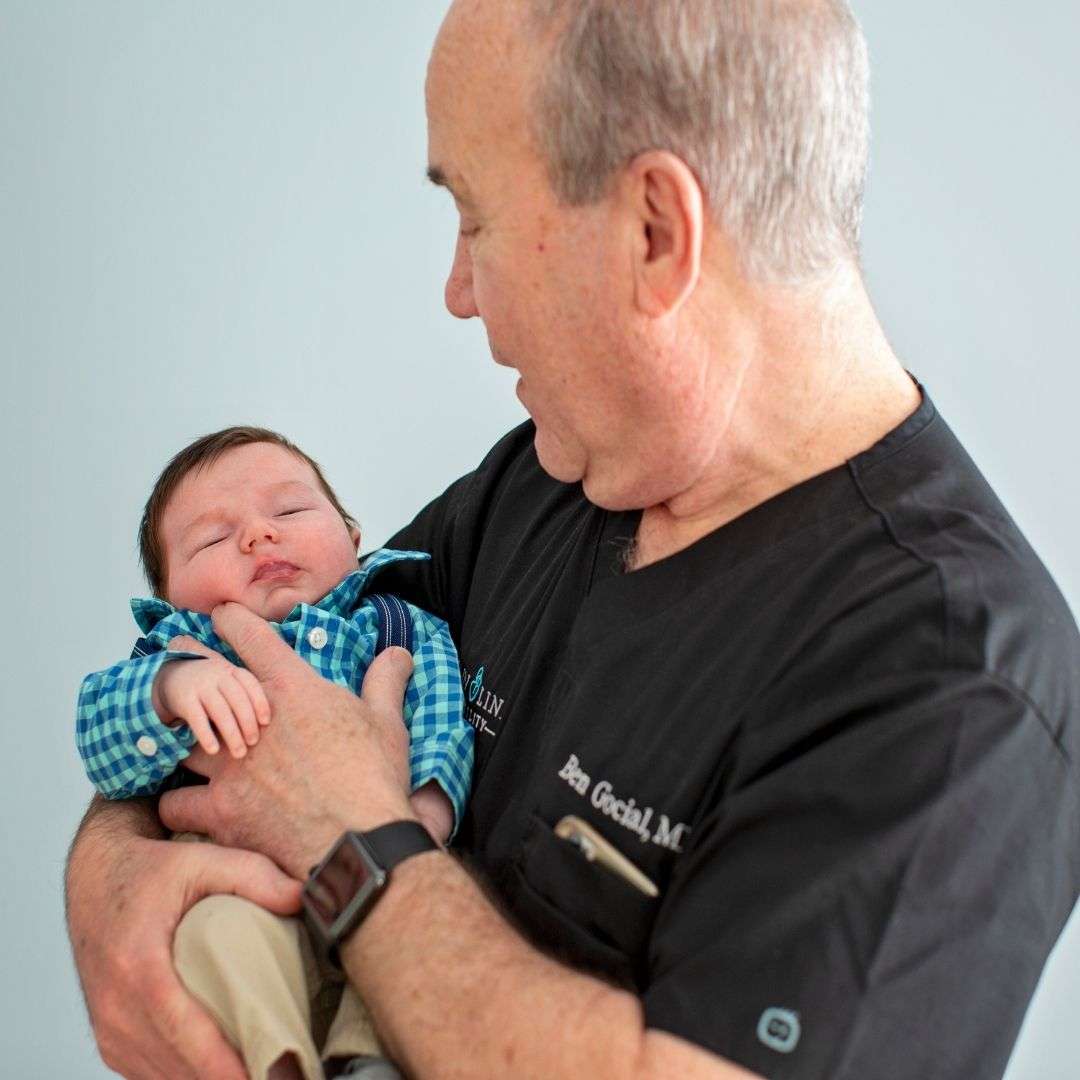What is IVF?
In Vitro Fertilization is a highly effective assisted reproductive technology (ART) commonly referred to as IVF. IVF is the process of fertilization by extracting eggs, obtaining a sperm sample, and then manually combining an egg and sperm in a laboratory dish. The resulting embryo is then transferred to the uterus of the person who plans to carry the pregnancy.
Who is IVF right for?
IVF might be right for you if you’ve you are planning to use a donor egg or you’ve been unable to conceive through IUI or other methods.
Additionally, other factors that might contribute to your decision to proceed with IVF are:
-
You and your partner both have a uterus and would both like to have a biological connection to the pregnancy (see Reciprocal-IVF)
-
You’d like to use eggs frozen during fertility preservation
-
Your partner produces sperm, but has low sperm count, poor sperm motility and/or abnormal sperm morphology
-
Your age is a consideration
-
You have any of the following challenges:
Fallopian tube damage or blockage
Ovulation disorder
Endometriosis
Uterine fibroids
Previous tubal sterilization or removal
Unexplained infertility
Genetic concerns
What is the process actually like?
At Main Line Fertility, we want you to know exactly what to expect from every part of your journey with us. Each of us knows personally how hard it can be to venture into the world of family-building; we will make sure that you know exactly how long things will take, how much it will cost, and what the rates of success are.
One IVF cycle takes about six to eight weeks from start to finish. Here are the steps you can expect:
-
Fertility Health Consult
First, you and your partner(s) (if applicable) will meet with your physician for testing and a personalized discussion of your fertility health and family planning goals. Together, you will decide if in vitro fertilization is the right choice for you and create a personalized treatment plan.
-
Ovarian Stimulation
Over a period of 9-12 days, we will stimulate your ovaries with self-administered injections. These injections utilize a thin needle (similar to what a diabetic might use for insulin shots) and are given subcutaneously, which means below the skin (as opposed to in the muscle). You will also have approximately five to seven early morning monitoring appointments to assess whether the injections are working.
-
Egg Retrieval
Once the monitoring shows that the egg maturing process has worked, you will come to our on-site surgery center where your doctor will gently guide a needle attached to a catheter through your vaginal wall to collect your eggs. The painless procedure will take 10-20 minutes and you will be under twilight anesthesia. Most patients don’t even remember the procedure, and you may bring a partner or friend with you if you’d like. There are no stitches or scars and most patients return to work the following day.
-
Fertilization
In our state-of-the-art laboratory, our highly experienced embryologists will oversee the process of the sperm fertilizing the egg. Some patients will benefit from the use of Intracytoplasmic sperm injection (ICSI) and/or ZYMOT sperm separation device during this step of the process
-
Embryo Growth
Over a 3 to 7 day process our embryologists oversee the growth of your embryo(s). Some patients will benefit from non invasive preimplantation genetic testing after this step of the process.
-
Transfer
During embryo transfer your doctor will insert a speculum into the patient’s vagina and then, using an ultrasound for accuracy, the doctor will then pass a catheter through the cervix and into the womb. The embryos are then passed through the tube during this short, pain free procedure.
How much does IVF cost?
Fertility care can be expensive and for many patients the cost of treatment can be a significant hurdle. The actual cost of fertility treatment is based on a number of factors including your fertility goals, treatment plan, insurance coverage and prescription benefits.
At Main Line Fertility, we offer financing, an IVF refund program, discount programs, and clinical research trial opportunities to make care accessible for more patients.
Please contact us to schedule a fertility health consult and discuss IVF costs for your specific needs.
How many rounds of IVF should we expect?
When it comes to any fertility process, there are so many variables at play (age, hormone levels, other medical considerations) so we can’t say exactly how long it will take for any one person to conceive. But when it comes to IVF, there are some specific things we know:
-
On average, a single IVF cycle has between a 28-48% chance of resulting in successful pregnancy and live birth (compared to up to 20% per cycle with IUI).
-
It is generally recommended that families trying to conceive plan for three to four IVF cycles, and you should know that chances of a successful pregnancy and birth continue to increase with multiple cycles.
-
With egg and embryo freezing, multiple IVF cycles can be completed with a single egg extraction.
Will we use fresh or frozen genetic material?
When proceeding with IVF, there are several decisions to make regarding sperm, eggs, and embryos. Often, your choice of whose eggs and sperm you will use—your own, a known donor’s, or an unknown donor’s—will be the most important factor in whether you use fresh or frozen genetic material.
However, there are some benefits and drawbacks to each of these decisions, so let’s take a look!
Sperm
There is no difference in likelihood of conception when using fresh or frozen sperm for IVF.
If you’re working with a known donor, such as a friend or someone you have met for the express purpose of utilizing them as a donor, you may be able to use their sperm without it being frozen first. This could be slightly more cost-effective; however, fresh sperm dies quickly! If utilizing fresh sperm, embryo formation must happen quickly.
If you’re working with a known donor who lives far away or an unknown donor through a cryobank, you will likely be using a sample that has been collected in a clinic, washed to remove the semen, frozen, and stored at subzero temperature. Frozen sperm can more expensive than fresh sperm, but it has the benefit of already being analyzed for concentration, volume, and morphology.
Eggs
Fresh eggs have a slightly higher conception rate with IVF than frozen eggs.
To use fresh eggs, the cycle of the person donating the eggs and the person who will be carrying the pregnancy must be synced. If you are supplying your own eggs, using your partner’s, or a known donor, it is possible to use fresh eggs.
It can be difficult to coordinate cycles, and you may choose to undergo multiple rounds of IVF from one egg retrieval, so egg freezing is also an option, although there is a cost associated with storage.
If you have eggs saved from fertility preservation, a previous egg retrieval, or you are using an unknown egg donor, you will use frozen eggs for your IVF procedure.
Embryos
Fresh embryos have a slightly higher rate of implantation than frozen embryos.
If it is your first round of IVF or if you do not have remaining embryos from a previous IVF cycle, you will likely use fresh embryos.
Frozen donated embryos or frozen embryos from a previous IVF or INVOCELL cycle will be thawed before implantation.
Should we use a known or unknown donor?
With IVF, you have the ability to use a sperm donor, an egg donor, or both!
There are benefits and drawbacks to both known and unknown donor options. To start, let’s define each:
Known Donor: A donor whose identity is known to you. A known donor is often someone you know, such as a friend or acquaintance, or can be someone you met for the express purpose of sperm or egg donation.
Unknown Donor: A donor who went through an intermediary, whose identity is intended to be unknown to you. You may be familiar with the phrase “anonymous donor,” but because of readily available genetic testing, the concept of anyone being truly “anonymous” is no longer an option.
Now, what are the benefits and drawbacks of each type of donor? Let’s look!
Known Donor
Benefits:
-
Some families want the option of having a donor who is committing to some level of involvement in their lives (or the lives of their children). This option is only available if you use a known donor.
-
Should any questions about genetic diversity, allergies, developmental milestones, etc. come up, some families like the option of asking their donor for more information about those medical and/or developmental topics.
-
Some couples choose to have a relative donate sperm or eggs for their pregnancy, such as the sibling of the partner who is not carrying the pregnancy. This allows for a genetic connection between the non-carrying partner and the pregnancy.
-
When working with a known donor, it is unlikely that they will have contributed to more than a handful of pregnancies throughout their lives, which is considered a positive by families who are concerned about the number of genetic “siblings” generated by one donor.
Drawbacks:
-
The legal connection between a known donor and a pregnancy can be complicated, depending on where you live. In some cases, known donors will have to go to court (perhaps even multiple times) in order to sever their legal connection to the pregnancy and ensuing baby. These court dates can be expensive.
-
There are times when donors have a change of heart, either about donating or about the type of relationship they would like to have with the pregnancy and ensuing baby. This can make for complicated, even legally messy situations.
-
In some cases, the relatives of the known donor may attempt to establish social or even legal connections to the pregnancy and/or ensuing baby.
Unknown Donor
Benefits:
-
Some families want the option of having a donor who has committed to no level of involvement in their lives (or the lives of their children). This guarantee is only available if you use an unknown donor.
-
If working with a cryobank, extensive testing is done on every donor with an emphasis on sperm quality/quantity, background examination of mental health conditions, and three generations of medical histories are examined for each donor.
-
If working with a cryobank, donors have already severed legal ties with their samples, so there is no concern about legal challenges by donors.
Drawbacks:
-
There are limited options for communicating with donors about medical questions or concerns. Cryobanks may be able to act as an intermediary, but the donor will be able to decide whether they choose to communicate and their anonymity will be prioritized throughout the process.
-
For sperm, there are global limits placed on how many family units may be formed using any single donor’s sperm, and some cryobanks may choose to further limit the number of families created by their donors. However, it may still be possible that 15-25 families across the world have used the same donor you did, which means that your child/ren may have 60+ genetic “siblings.” While some families like having a connection to other families who used their donor, others don’t like the idea of having so many genetic relatives.
-
Some donor-conceived children believe that every person has the right to know the person who contributed the sperm or egg that created them, and that type of relationship isn’t possible with an unknown donor.
How can partners be involved in this process?
At Main Line Fertility, we are eager to include partners at every step of the process.
Partners are ideal support people before, during, and after any medical procedure. Let your partner know what kind of support you need– physical, emotional, or otherwise– so they can give you the support you need.
Partners can also do a lot of the logistical and emotional labor involved in a conception process. They can call to book appointments, pick up prescriptions, ensure sperm is transported safely, and help with administering injections and taking medications. Fertility processes go well when both partners feel equally engaged and invested in the process. Don’t be afraid to ask for help from your partner, to offer help to your partner, and to ask for what you need (regardless of whether you’re the person conceiving or not).
If you and your partner will be selecting a sperm or egg donor, you can work together to decide which characteristics or qualities you may look for in a donor. There are several mobile apps that can be used for picking a baby name; you AND your partner enter names you each love and then the app presents you with the names you both selected. These apps can be used for selecting sperm or egg donors! You can both look through a cryobank library of donors or think through potential donors in your life, list the names or donor numbers in the app, then see which donors you both selected.
If a patient’s partner also has a uterus, that individual can do a fertility check-up as well! This can be useful in case the first intended patient isn’t able to conceive and carry a pregnancy due to a medical condition; knowing about the partner’s health ahead of time can help you strategize about other options. Going through a fertility check-up can also help build critical empathy between partners– the partner knows more about what the patient is experiencing and can provide even more effective support along the way. Additionally, you can find out if Reciprocal-IVF is a good option for you and your partner.


